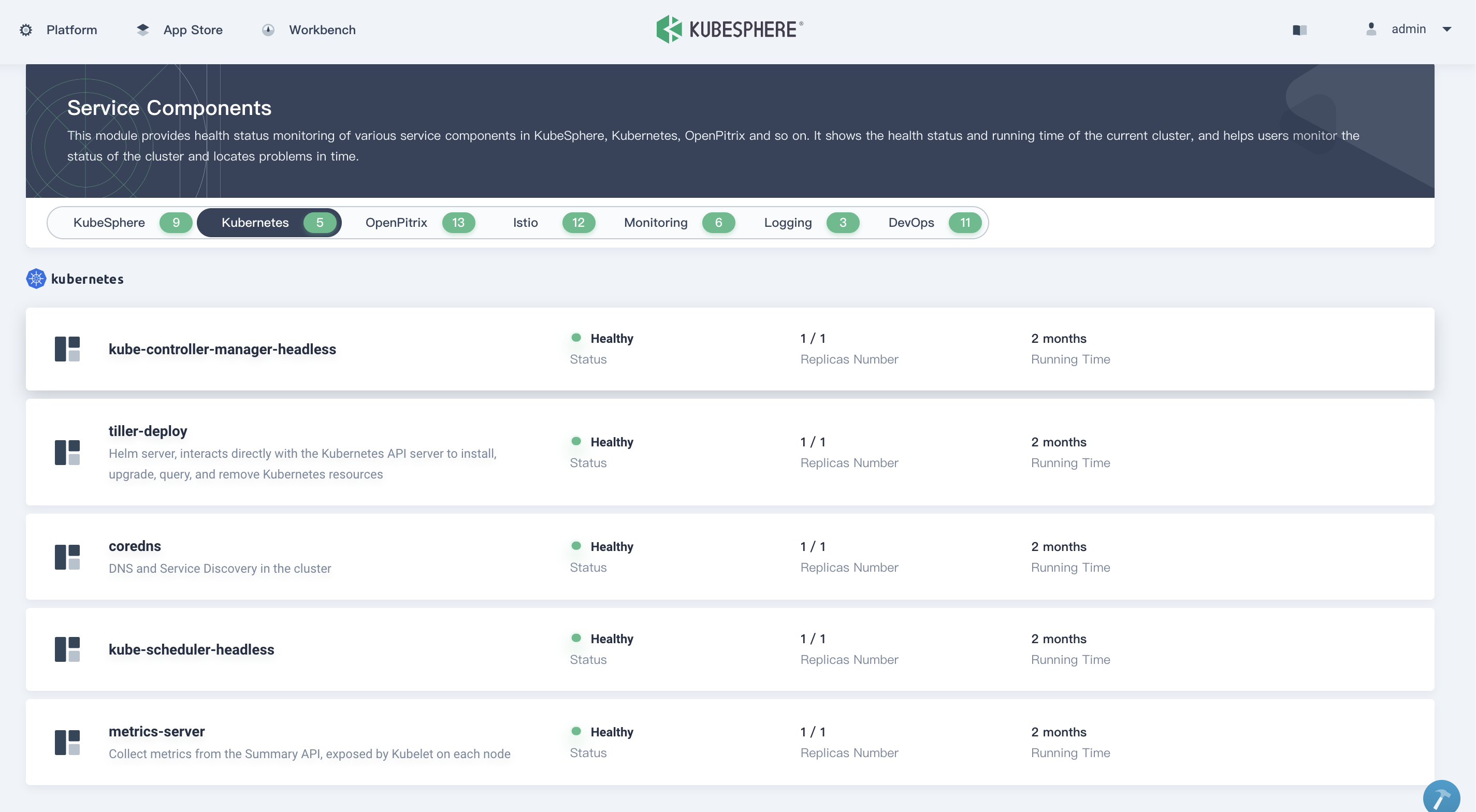Release Notes
Installation
Install on Linux
Install on Kubernetes
Pluggable Components
Upgrade
Third-Party Tools
Authentication Integration
Cluster Operations
Quick Start
DevOps
User Guide
Configration Center
Logging
Developer Guide
API Documentation
Troubleshooting
FAQ
Verify Components Installation
EditInspect the Installation Logs
When you enable the KubeSphere pluggable components for an installation, you may want to inspect the logs and verify if the installation is successful or not. If failed you need to know how to resolve it. You can follow the instuctions below for reference.
- Inspect the dynamic real-time logs output from the Pod ks-installer.
kubectl logs -n kubesphere-system $(kubectl get pod -n kubesphere-system -l app=ks-install -o jsonpath='{.items[0].metadata.name}') -f- When the logs show the following result, it means the installation is successful.
#####################################################
### Welcome to KubeSphere! ###
#####################################################
Console: http://192.168.0.53:30880
Account: admin
Password: P@88w0rd
NOTES:
1. After logging into the console, please check the
monitoring status of service components in
the "Cluster Status". If the service is not
ready, please wait patiently. You can start
to use when all components are ready.
2. Please modify the default password after login.
#####################################################- Then you will be able to log in to KubeSphere console, enter into
Platform→Service Componentsand check the components status. Generally, each component should be healthy.

Verify the Result of Pluggable Components
In addition to viewing the component status on the console, you can also use the web kubectl to confirm whether the pluggable component is successfully installed or not.
General speaking, when all pods of a namespace display Running, and all jobs show Completed, it means the component is successfully installed.
Verify KubeSphere Minimal Installation
By default, KubeSphere Installer will be started with minimal installation. You can check the status of Pods and Jobs in the following three namespaces where all system workloads of KubeSphere are running.
kubectl get pod -n kubesphere-system
kubectl get pod -n kubesphere-monitoring-system
kubectl get pod -n kube-systemVerify KubeSphere Application Store Installation
If you have enabled KubeSphere Application Store, you can verify the status of Pods and Jobs using the following command.
kubectl get pods -n openpitrix-systemVerify KubeSphere DevOps System Installation
If you have enabled KubeSphere DevOps System, you can verify the status of Pods and Jobs using the following command.
kubectl get pods -n kubesphere-devops-systemVerify KubeSphere Logging System Installation
If you have enabled KubeSphere Logging System, you can verify the status of Pods and Jobs using the following command.
kubectl get pods -n kubesphere-logging-systemVerify KubeSphere Service Mesh Installation
If you have enabled KubeSphere Service Mesh (Istio-based), you can verify the status of Pods and Jobs using following command.
kubectl get pods -n istio-systemVerify Metrics-server Installation
If you have enabled Metrics-server, you can verify the status of Pods using the following command.
kubectl get pods -n kube-system | grep metrics-serverHow to Restart ks-installer
when you see installation process get stucked, you may need to restart the installation. You can delete the Pod ks-installer or scale it to reinstall.
kubectl delete pod ks-installer-xxxxxx-xxxxx -n kubesphere-system